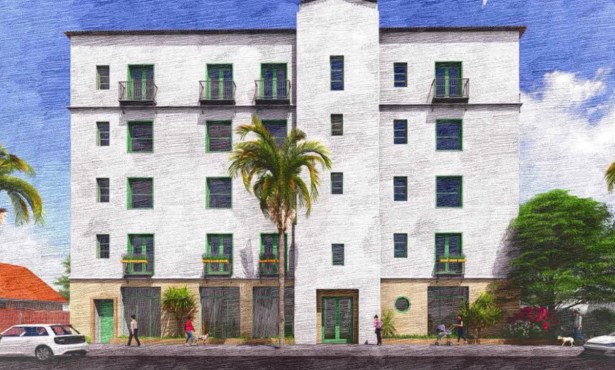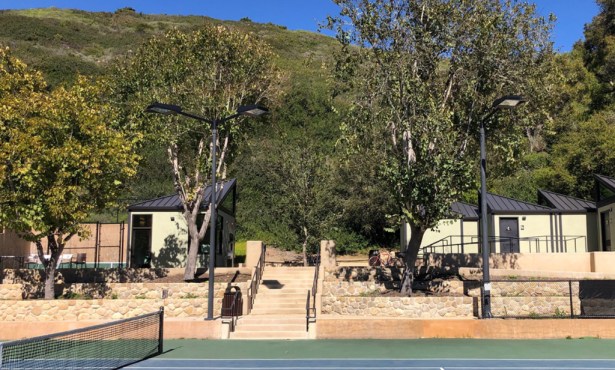Son of Measure D?
Every City for Itself in Congestion Relief
by Nick Welsh
With the carcass of Measure D — the countywide congestion relief
measure — still smoldering in the ashes of last week’s crushing
election defeat, some South Coast politicos are actively trying to
figure out some substitute funding scheme to finance road repair
and alternative transit projects. For example, Santa Barbara City
Councilmember Helene Schneider is already floating the idea of
putting a quarter-cent sales tax hike on the ballot under the
auspices of the Metropolitan Transit District — but just on the
South Coast, not countywide as Measure D had been. The proceeds,
she suggested, could be used to fund increased and improved mass
transit, bike lanes, and perhaps even some commuter rail. The
immediate appeal of Schneider’s suggestion is that money raised on
the South Coast could be used according to the wishes and whims of
South Coast voters — who proved far more supportive of Measure
D — and not depend upon the acquiescence of North County voters. “I
don’t know how much money this will raise and if it’s even enough,”
Schneider said, “but I know we have to do something.”
The reason something has to be done is that every city in the
county — as well as the county itself — will feel an acute pinch
when the existing Measure D expires in 2010. Since it went into
effect in 1986, Measure D has allowed public works chiefs
throughout the county to sleep easy at night, knowing they had a
pot of gold — based on a half-cent sales tax surcharge — from which
to draw for necessary road repair projects. But with the failure of
Measure D2006 — which would have extended Measure D for another 30
years and increased the sales tax surcharge by a
quarter-cent — they will soon be confronting a funding crisis of
immense proportions. The County of Santa Barbara relies on the
existing Measure D for roughly half its road repair budget; the
City of Santa Barbara, for about one-third. The new, expanded, and
just defeated Measure D — which would have raised $1.6 billion
during the next 30 years — promised not merely to maintain the
roads, but to set aside significant amounts for freeway widening,
commuter rail, and mass transit.
In the aftermath of last week’s defeat, Measure D’s campaign
strategists have an array of issues to blame for their fall,
including the fact that they were proposing a quarter-cent tax
increase — always a risky proposition — at the same time Governor
Arnold Schwarzenegger was campaigning so vehemently against any
kind of tax hikes. But ultimately, it was not Measure D’s admitted
lack of sex appeal that doomed the measure; it was the two-thirds
supermajority by which state law requires any tax increase to win.
Countywide, Measure D managed to garner only 54 percent of the
votes. Even in the City of Santa Barbara — where it took 66.1
percent of the votes cast — it fell short of the two-thirds
required. Only in Isla Vista did Measure D actually win, taking 81
percent of the vote.
Many campaign strategists and alternative transit advocates are
skeptical that any measure could win the two-thirds majority
countywide. “We have a red state and a blue state stitched together
with very different values and different priorities,” said Gregg
Hart of the Santa Barbara County Association of Governments. “It
might just be impossible.” If that’s the case, warned Measure D
campaign consultant Brian Robinson, any regional transportation
initiative is pretty much dead. “It’s going to be every man for
himself and every city for itself,” Robinson said. “The way I see
it, the county, which has no real sales tax base, gets really
screwed.”
As Robinson and Schneider noted, individual cities can pass
sales tax increases to buttress their general funds; if they don’t
specify where the money goes, state law holds they need only a
simple majority of 50 percent plus one. For the City of Santa
Barbara, a quarter-cent sales tax translates to $5 million a
year — or $150 million during 30 years. Combine that with the $250
million Robinson estimates a South Coast quarter-cent proposal
would raise during 30 years, and there might be some real money for
real projects.
Still, the numbers are tight. Just to maintain existing service,
MTD says it will need $750,000 on top of the $3 million it already
gets from Measure D. Bike lanes aren’t cheap, nor is the commuter
rail pilot project, which weighs in at $106 million. And none of
that even addresses the politically popular freeway widening
project, which could prove immensely expensive. As politicos like
Schneider try to concoct funding schemes that might actually pass,
the Santa Barbara County Association of Governments will discuss
whether to spend $20,000 this week to find out why Measure D lost
so badly, and if it’s worth trying again in 2008 before declaring
that the sky has officially fallen.


